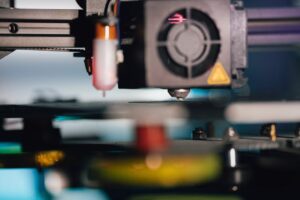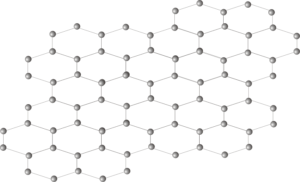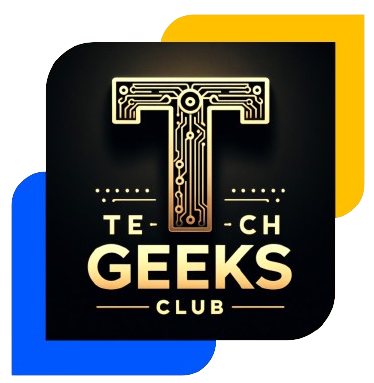In a time that is highly characterized by technological advancements, our recent eternity effortlessly breaks away from that first ten years. The industrial sectors have been transformed, and some of the most critical parts of our lives have been sensefully affected; the whole society is touched. This blog article will not only introduce the top 20 inventions of the last 10 years but also highlight their transformative power, inspiring us to imagine the potential of these innovations in shaping our future.
Defining a Breakthrough Invention
We should begin by explaining what one could call a breakthrough invention before we present our list. Such inventions introduce new goods or product foundations for technology, solve important problems, or present before impossible approaches. The introduction of these breakthrough inventions, therefore, is positive and assessed not only in terms of the impact each innovation has on release but also in terms of the possibilities of introducing clears for future advances.
The Top 20 Inventions of the Last 10 Years
From transforming healthcare through groundbreaking medical technologies to revolutionizing communication with advanced digital platforms and tackling environmental challenges with sustainable solutions, the following inventions have significantly impacted our world. They have set new benchmarks in innovation, pushing the boundaries of what’s possible, and most importantly, they have brought hope for a better future.
CRISPR-Cas9 Gene Editing:

CRISPR-Cas9, which has revolutionized genetic research, represents the cutting edge of genetic tools, allowing the precise editing of organisms’ DNA. The unique technology makes it possible for the first time to alter living creatures’ DNA accurately. But its impact continues beyond there. CRISPR-Cas9 heralds a new era of genetic medicine, providing hope for the treatment of numerous genetic diseases for which previously little to nothing could be done and opening doors to a future where we can design our DNA.
CRISPR-Cas9 holds the potential to cure a wide range of genetic disorders on a specific level. Since it allows scientists to target and modify mutated genes that cause defects, genetics has fundamentally and forever changed. Personalized medicine is incredibly fascinating because it opens up a wide range of opportunities against previously incurable diseases. By modifying DNA to target the unique characteristics of each patient, CRISPR-Cas9 marks the beginning of a new era in medical science in terms of the approach to treating genetic disorders.
Autonomous Vehicles:

Autonomous Vehicles, a concept that was once confined to science fiction, are now a reality. Started and led by ambitious companies such as Tesla and Waymo, these self-driving cars are changing everything about what we think a vehicle is and should do. They hold the promise to significantly decrease human error and save millions of people, thus propelling us into a brighter, safer future.
These vehicles are not just cars without drivers: they are loaded with the most up-to-date technology available: radar, lidar, GPS, odometry, computer vision, and others. This allows them to see and move more precisely than we can. It will help them stay up to date about traffic patterns and stoplights and recognize objects far more quickly and accurately than our senses allow.
This will help us reduce crashes, enhance street function, and reduce commuting pressures and stress. In effect, it could assist in completely transforming the way we take care of ourselves and why we do so.
3D Printing:

However, the history of 3D Printing began more than in the manufacturing and prototyping halls. Today, its influence extends to a wide variety of applications, from full-scale homes that may transform the future of construction to intricate human organs that may revolutionize the field of medicine.
Therefore, first and foremost, this ability to generate new designs and products based on them demonstrates how automotive 3D Printing is used and the extent of opportunities it opens. The benefits of designing according to specific demands and reducing material waste are just two of the aspects of the technology that make it such an essential component of contemporary manufacturing and design.
Renewable Energy Technologies:

The technology of solar panels and wind turbines has significantly advanced, resulting in a massive improvement in the efficiency and convenience of renewable energy sources. This technology is crucial in propelling the green energy revolution into the future.
Technological advancements in the power generation line improve the practicality of environmentally friendly sources of power for a broader range of uses, and that is vital in reducing the worldwide use of fossil fuels. Additionally, using renewable sources becomes more cost-effective as the methods become more efficient, making it easier for companies and individuals alike.
Consumers have supported the use of renewable sources of energy for various reasons. For one, renewable energy protects the environment. Secondly, promoting energy self-sufficiency contributes to a better planet for future generations.
Blockchain Technology:

Blockchain technology was initially invented as the underlying technology for cryptocurrencies such as Bitcoin. It is best known for its secure and distributed ledger systems, making it suitable for more than only digital currencies. The technology is harnessed to increase security, promote transparency, and streamline operations across virtually all industries.
Blockchain is revolutionizing record-keeping and verification of financial transactions by reducing fraud and enhancing efficiency. Patient data management and privacy have been simplified in the healthcare sector, making it easier to exchange information between entities securely. The supply chain sector continues to benefit from increased traceability and accountability, which ensures contribution and reduces delays.
Blockchain technology, for instance, was initially invented as the underlying technology for cryptocurrencies such as Bitcoin. However, its potential has expanded into domains such as voting systems, real estate, and legal contracts, transforming the procedure in which information and assets are managed and transferred around the globe. This versatile innovation expands its utilization and promises to revolutionize even unprecedented levels of industries in the foreseeable future, sparking excitement about the endless possibilities it holds.
Smart Wearables:

Devices such as the Apple Watch have revolutionized health monitoring. Monitoring key fitness metrics has always been challenging. Still, this technology not only makes it easy but also enables early detection of potential health issues. In some cases, these devices have literally saved lives, sending real-time alerts to the user whenever they detect a concern, be it an irregular heart rhythm or a sudden drop in blood oxygen levels.
These devices, aided by advanced sensors and algorithms, provide insights into our physical activity, sleep patterns, and overall health trends. The more available and more accessible to understand their health data, the more users are likely to develop healthier habits and behaviors. In addition, the incorporation of healthful and helpful apps can further improve the user’s healthful experience. Whether it’s reminding the user to drink water, track meal calorie intake, or even meditate through guided sessions, these devices make it extremely easy for the user to have absolute control and monitor their health.
Overall, influenced by devices like the Apple Watch, the development of innovative wearable technology vividly enhances one’s approach to health. For Instagram-4, it is a crucial tool in enhancing the possible essence of health.
Quantum Computing:

As such, even though quantum computing is still in its infancy, it harbors the potential to redefine the numerous facets of technology as we know it. The technology promises to be the answer to numerous fundamental issues and problems that are currently beyond the capacities of traditional computing.
Quantum computing has the power to broaden the possibilities of almost every existing field. In other words, it can operate at a level of speed and performance that remains unattainable with current computing technology. An excellent example of the possibilities that it unlocks is its application to cryptography, which could eliminate data security in ways that derail encryption systems.
Additionally, the field of material science could usher in new ways of creating materials from scratch. Finally, and perhaps the most exciting, quantum computing can simulate and explore complex systems that were previously beyond human comprehension, including problems in climate science and quantum physics. Overall, quantum computing is the future of computing.
Augmented Reality (AR) and Virtual Reality (VR):

Augmented and virtual reality technologies have dramatically reformed the digital landscapes and the realms of gaming and education. AR and VR are more than just new experiences—they represent an entirely new way of viewing the world. Above all, through immersive virtual and physical experiences, users are no longer confined to seeing finely crafted virtual environments but can also interact with and modify the digital experiences in the natural surroundings around them.
The technology allows users to integrate finely created and programmed digital areas over their real-world visuals, creating a seamless blending of physical and digital realities. This merging of realities does not simply improve one’s knowledge journey, play gaming, or even high-tech training simulations; instead, it brings new and exciting interactive and immersive possibilities to every artifact and sphere.
The ability of AR and VR to immerse users in highly crafted and interactive surroundings has revolutionized how teachers work and how corporals gain life experiences related to professional training.
The Internet of Things (IoT):

The Internet of Things, or IoT technology, describes the joining of the Internet and everyday objects; it is another thing that has completely changed our lives. IoT has brought a new era of automation at work and home. This new era has allowed us to live more intelligently and comfortably; now, our devices are not just appliances but true partners in the management of our surroundings.
Through IoT, they are now able to meet one another. In other words, things have now become gadgets. This allows users to control and automate many things that used to require manual operation. A user can now manage various devices in the house, from the temperature, the light that turns on, and the security; one can also view the status of devices from anywhere in the world, with internet access — for example, on vacation. All of this saves us time, which we can now spend on more meaningful things.
Artificial Intelligence (AI) and Machine Learning:

Artificial Intelligence has advanced to dominate a more significant part of modern technology in its various applications. These include chatbots that simulate human conversations to perform tasks such as providing support for customers and maintaining ongoing engagement with activity.
The applications further advance to complex predictive systems that can forecast future patterns and make decisions after studying market data. AI’s primary ability is in machine learning, in which it learns from the tasks performed and data analyzed to improve and acquire additional knowledge over time. The learning ability ensures that it enhances its ability to execute complex tasks as time progresses.
Consequently, various fields have adopted the use of AI due to their ability to perform complex tasks quickly. Such fields include healthcare in diagnosis, finance in predicting stocks, and in automobiles to control automatic vehicles. AI development can help transform work and life, given its ability to undertake multiple and continuous tasks.
Advanced Robotics:

Since then, the role of robots has dramatically transformed in ways that surpass imagination. From being our surgeon for complicated surgeries – executing them with the utmost precision- to the ability to automate and streamline tedious tasks and manufacturing lines, this has been possible.
More interestingly, robots can be our friends and offer companionship services. The above revelations indicate the milestone growth and future in the robotics and artificial technological field. Robots and other machines become active participants in how we perform our roles as humans; they are included in every individual means regardless.
This impact cannot be ignored. Therefore, technological advancement creates a world that requires additional creativity and innovative ways of thinking in our engagements and the scope of defining boundaries and entities as humans. Most certainly, future robot technologies will continue evolving science beyond the world’s imagination and dreams.
Biodegradable Materials:

The fight against plastic pollution is a relentless endeavor. The creation and commercialization of biodegradable materials represent a considerable march in an attempt to lead a more sustainable, greener future. They are materials that have been designed with the environment in mind, rotating growing and imagined material systems proven to damage and compromise much less while still being wholly viable.
The contact of such ingenious materials is like consumer submission with no recuperation – barely, not quite. As the materials used today to create products deteriorate back into the soil, the spending underbelly of our society is progressively exposed, which finally concludes the age of fossil-fuel-generated wealth.
Water Purification Technologies:

However, some innovative filtration techniques stand to change this narrative regarding the purification of water worldwide. The invention of graphene filters has some transformative properties and capabilities. Graphene filters are game-changers in the way humans will drink clean water. The capacity filters remove more refined impurities like hazardous chemicals and bacteria through water purification using improved techniques in comparison to conventional water purification techniques. Therefore, these filters can effortlessly guarantee the availability of clean drinking water, making them the perfect solution. It implies that this innovation will be critical for the common good and significantly boost the quality of life across the world. Furthermore, it will be a significant milestone in the green journey.
Wireless Charging:

The invention of wireless charging for our favorite gadgets, such as smartphones and laptops, will be the beginning of a new era in the journey to a future without constant problems related to tangled charger cables and the never-ending searches for compatible charging cables.
Wireless charging is a revolution not just in terms of convenience but also in terms of experience. It will change not only our daily routines but also the way we communicate with our various gadgets. Absent permanently attached cords that need to be plugged into the power source, wireless charging enables an entirely new design of charging solutions and jobs.
High-Speed Internet Technologies:

Through its extensive deployment, 5 G technology has propelled the Internet into a new era that is faster, more efficient, and more dependable than anything that has come before. This epoch-making event heralds a time of unprecedented connectivity.
It gives rise to a host of new applications and businesses that depend on high-speed internet access beyond the capacity of most existing networks. 5G has ushered in a new age of possibilities, from streaming high-definition videos without buffering to seamless, intelligent cities that can connect an infinite number of IoT devices simultaneously.
In other cases, 5G broadens its possibilities further into the medical sciences, where Telemedicine could enable remote surgeries and real-time data transmission. That is merely the tip of the iceberg. Third, there is the presumptive promise of self-driving cars. 5 G’s minimal Latency, together with high data transfer speeds, is required to design and operate self-controlled vehicles. This, in turn, can significantly enhance road safety and efficiency. Far from merely being quicker, this technological advancement has the potential to revolutionize the globe as we know it.
Voice Assistant Devices:

Alexa by Amazon, Google Assistant, and other devices and software that use voice to assist their owner have, no doubt, changed the knowledge of one’s own devices for humans. What used to be unbelievable and almost impossible can now be seen in the usual households, offices, and organizations, erasing the line between reality and fiction.
Playing with a song or loudspeakers, ordering a porch for the next day, setting an alarm in the morning for work, or just giving a compliment. All of these and dozens of other actions have become as easy as saying, “Hello, how are you doing?”. It shortened the time needed to perform different tasks and the learning curve for utilizing electronics, thus becoming the new standard of an era where everyone is bound to become friends with their own devices.
Graphene:

Graphene, often called a “wonder material,” is truly unique. Its fabulous tensile strength exceeds that of steel, and its exceptional flexibility and electrical conductivity are hard to match with any other material. Due to these unmatched properties, there are countless possible applications across every conceivable field.
For example, in electronics, the inclusion of graphene could lead to smartphones and laptops operating faster, with more relaxed and more efficient components requiring less power, which in turn could increase battery life while enhancing overall performance. In medicine, graphene opens almost limitless possibilities for delivering drugs directly into cells or creating bionic implants that could replace or support unnatural functions, which could revolutionize the way people are treated and cured.
The use of graphene in materials science could contribute to the creation of composites that are better and lighter than any materials available today, which also opens plenty of possibilities in terms of multiple industries, including aerospace, automotive, and construction. In other words, this miraculous material, with its multiple unique features and potential applications, is at the cutting edge of science and could help to create a new age of future understandings.
Nanomedicine:

Truly, nanotechnology in medicines has revolutionized the industry and reshaped the sole approach to providing treatment. The new technology favors the creation of unique drug delivery systems based on nanoscales, which identify only the target zone and deliver the medication there. With such an approach, treatments using this technology are characterized by fewer side effects and effective results as the dosage is less diluted. Furthermore, as the diagnostics sector further assisted with nanoscale devices, tracking the initial stages of diseases has become possible, which allows doctors to cure patients at an early stage.
Above all, from the long-term perspective of the development of this technology, the introduction of nanomedicine promises further implementation of personalized treatment modalities. With respect to the personality and the genetic code of the individual, the healthcare provider will be able to select unique medicines that are most suitable for the patient. This will exclude possible adverse reactions and create personal approaches for every sick person, which is a breakthrough in medicine.
Social Media Platforms:

Platforms such as Instagram and TikTok have drastically transformed the nature of communication, shared content, and marketing methods. Not only has there been a noticeable difference in the way we interact with each other on a personal basis, but these social media behemoths’ immersive content and real-time sharing capabilities have also helped businesses reach their target customers more meaningfully than ever before.
Operating on such platforms allows companies to utilize the breakthrough features and large audiences provided to interact with their target customers in ways that fundamentally alter how products are marketed in the modern era. This has led to the concept of influencer marketing, user-created content, and viral fads, all of which have redefined our digital consumption habits and provided firms with previously unprecedented brand development and customer connections.
Space Exploration Technologies:

Space exploration has evolved significantly due in large part to SpaceX’s pioneering initiative to develop rocket recyclability; thus, humanity’s ancient hope of colonizing Mars is rekindled, with the potential to extend this one step further by touring other realms of existence. Rocket recycling not only minimizes the overall expense of space travel by storing and reusing a considerable proportion of the launches but also increases the number of trips to outer space.
As a result of this technological advancement, a ride aboard an aircraft has become more available. Therefore, the concept of humans inhabiting other planets has grown more concrete than ever before. A triumphant return journey is one step closer to humanity, applying interplanetary travel to our daily lives to stop the infection of new areas of research and focus.
The Innovators Behind the Inventions
Every great invention is the result of numerous crazy ideas behind it. This section will introduce the people, groups, and teams of visioners and crazy brave individuals who made these inventions real—from solo geniuses to international research teams. It will illustrate the power of human creativity and persistence.
Implications and trends for the future
These inventions’ implications are beyond our minds, and they are not limited to their direct applications. They can and will reshape entire industries, improve our lives, and resolve the most critical issues of humanity in general. However, the pace of technology will continue to contribute to unprecedented changes, both opportunities and threats, that we could not imagine.
Conclusion
The last decade has been elevated to the heights of human technical ingenuity, from creations that have changed what is possible. As we watch the next, it is hard to think what we think about the future. What will become of these creations? What further things can we discover? We would love for you to share your feelings about the future of technology and creations.
We can also come together and support the next generation of developers and inventors. If you want to learn more about creation and technology, please learn more. The future of invention and technology is full of possibilities.
